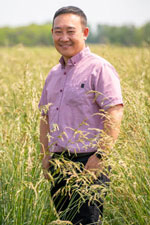Dr. Bill Biligetu (PhD)

Associate Professor
Ministry of Agriculture Strategic Research Program (SRP) Chair in Forage Crop Breeding

Associate Professor
Ministry of Agriculture Strategic Research Program (SRP) Chair in Forage Crop Breeding